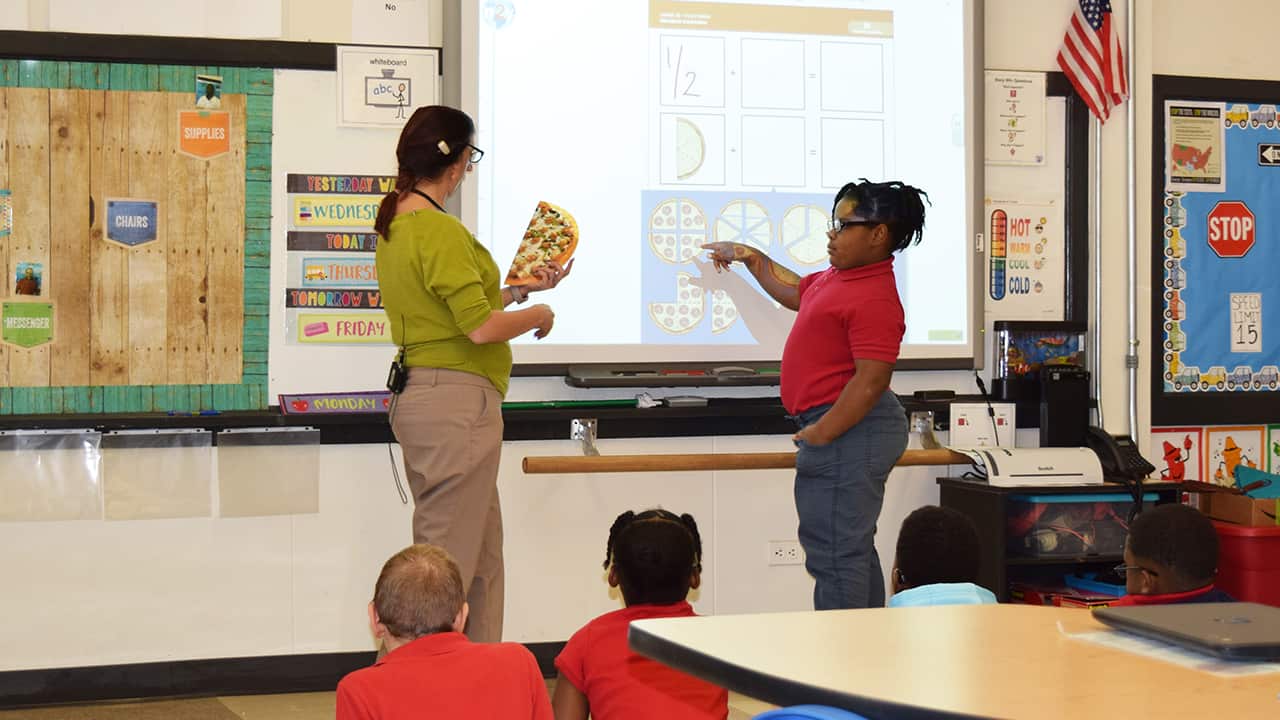*For simplicity’s sake, I will use parents instead of parents or caregivers throughout this blog article.
1. Assume the Best
Sometimes it’s hard to reach families. Have you ever felt perplexed when a parent hasn’t called you back or responded to your emails? Try not to imagine the reason why the parent hasn’t been easy to reach—there are a hundred possibilities. Job constraints, complicated family dynamics, and changes in contact information are just a few. And definitely don’t take it personally; doing so builds walls instead of bridges.
Instead, assume the best about students’ families. (And parents ought to assume the best about teachers, too!) Shifting your mindset to intentionally believing the best about your students and their families will yield immediate results. To start, teaching will feel lighter and more joyful because everyone is on the same team.
Parents want their children to learn and be happy at school. With some families, it may take a few extra tries to strike the right tone in a conversation or reach them at a convenient time for a chat. The extra effort you put in to figure it out will be well worth it.
Here are a couple of familiar scenarios and suggested ways to reframe them to assume the best:
Common scenario #1
The parent has not responded to repeated phone calls and emails about a student’s concerning grade in math. There is no option to leave a voicemail. The teacher is trying to inform the parent before the end of the semester.
Assuming the best looks like”¦
Considering the possibility that the parent’s phone number has changed or their service was cut off. They may not have access to consistent Wi‑Fi to check email due to financial hardship. Try sending a note home in the child’s backpack, relaying information through an older sibling, or meeting the parent at dismissal.
Common scenario #2
Parents have requested a meeting with their child’s teaching team to discuss progress. The meeting is scheduled for 3 1/2 weeks from today. They are frustrated that so much time will go by before their concerns will be addressed.
Assuming the best looks like”¦
Considering the possibility that the teacher who received the request took the information to the grade-level chair to set up a meeting immediately. The grade-level chair made a note to schedule a meeting the next day but then had to miss a few days of school because her own child got sick. When she returned, the team waited to convene until every teacher could attend, along with the school psychologist, IEP case manager, and social worker, so that as many resources as possible could be present at the meeting. Coordinating the schedules of seven adults is tricky.
2. Promote Two-Way Communication
It’s important for you to share frequent academic and behavioral updates with your students’ parents. It’s equally important for parents to reach out when they have questions or concerns. Developing a two‑way communication system requires thoughtful planning at the beginning of the year.
Start by making a list of the different ways you plan to communicate with parents:
- Printed newsletter
- Class-wide email
- Individualized email
- Phone call
- Text message
- Apps such as Seesaw, Remind, or GroupMe
- Handwritten communication on daily or weekly progress notes
- In-person communication (at arrival or dismissal, for example)
- Banners, flyers, or other material posted throughout the school
Which of these platforms are conducive to back-and-forth communication with parents? Platforms like email and text messaging through educational apps provide a low-pressure and efficient way to share information. They also allow you to share pictures and short video clips of students as they learn. If you share a short video of a science project presentation, invite parents to send questions in response. (Be sure to check the media policy at your school and ensure that you have photo-releases signed before taking any pictures or videos of students.)
3. Hold Schoolwide Events and Invitational Workshops
Yes, it is important to hold an Open House at the beginning of the school year! And it’s true, there’s hardly anything like the overwhelming sense of school pride at a Friday night football game. Any opportunity to invite family and community members into life at school is a good and worthwhile pursuit. But there’s a greater level of support that comes from engaging families on a more personalized level.
Try offering a specialized workshop for families of students with disabilities. Special education teachers and leaders might facilitate a workshop on literacy and focus on strategies for supporting literacy at home. Teach parents how to find leveled texts for their children at the local library or on supplemental educational websites. Show parents how to do a short read-aloud with the teacher modeling a particular skill like making a prediction or using context clues.
Special education leaders at your school may offer a specialized Back-to-School night specifically for families of students with special needs. Provide a broad overview of how your school serves students with disabilities and review basic terminology like inclusion, related services and case manager. While many parents of students with disabilities become experts in the IEP process, those who are new to your school or to special education will appreciate the orientation and the opportunity to ask questions. These early efforts to engage families go a long way toward building trust and establishing open lines of communication.
4. Collaborate Within the Community
Schools with great school pride and a tight-knit culture have strong community support. Think beyond engaging the parents of students in your specific classroom and consider your community organizations. Partner with a local eatery to offer a discount night with proceeds going towards a new playground, special technology, or a sports team. Invite professionals from the community to speak in your class or at a school assembly, or ask to visit their workplace on a field trip. It does wonders for kids to see adults doing real work related to their current studies. And it doesn’t hurt that most businesses and organizations appreciate the opportunity to showcase their support of neighborhood schools.
5. Suggest Learning Activities for Home
Parents appreciate hearing how they can help their children learn. They feel good knowing they’re on the right track when they’re helping with homework and reinforcing what’s being taught at school. So, give them specific suggestions on how to help.
- Offer tips for how to develop reading fluency at home
- Provide a list of websites/apps for fun and free multiplication fact practice
- Share information about the new interactive exhibit at the local children’s museum that relates to your upcoming unit
Teachers understand that learning opportunities are everywhere when you know how to look for them. Use class-wide communication tools to send parents a few suggestions for how to supplement learning at home. They appreciate specific directions for how to help.
When schools and families work together, students reap the benefits. Mutual goodwill and trust will be even more important in the fall as schools plan to reopen (or continue distance learning, in some cases) after a disorienting spring and summer as a result of the coronavirus response.



